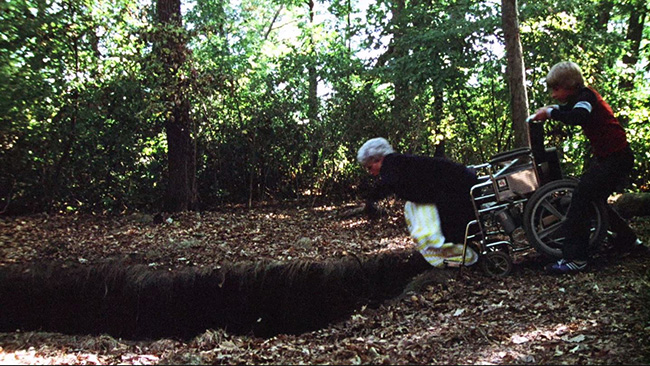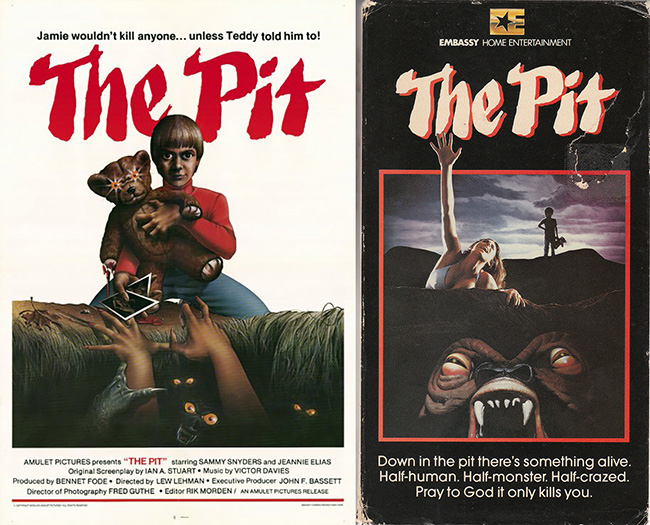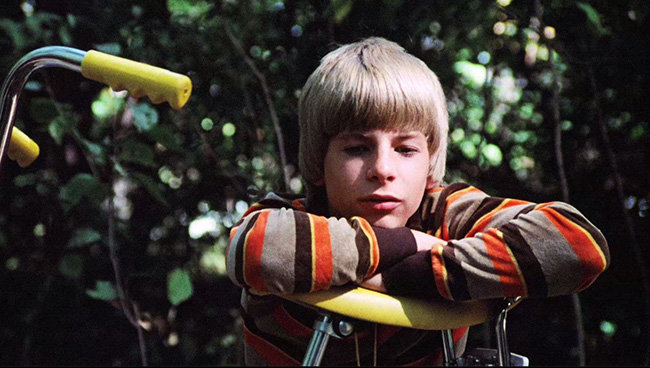
When I began dating my wife in the mid-90’s, she talked often of a horror film shot in her hometown of Beaver Dam, Wisconsin, when she was a child. We hung out in Beaver Dam all the time on visits to see her family. I was curious to see the movie, but watching The Pit (shot in 1979, released in 1981) proved difficult. Whenever her local library procured a tape, it was sooner or later stolen by some local resident who wanted their own household copy. At long last we found it in a store in a Madison shopping mall; the store specialized in used VHS tapes (yes, this actually existed), presumably of inventory sold off from video stores, which were still thriving back then. At some point we actually loaned our copy of the out-of-print 1984 Embassy Home Entertainment video to the library so they could make a copy. Since then, the movie has been released on DVD, and now it’s finally on Blu-Ray from Kino. I received my copy of the new release just in time for my annual horror movie party, and my wife gave a running commentary of the film, pointing out all the Beaver Dam locations. If it hadn’t arrived in time, my back-up plan was to show the VHS, and perhaps that would have been an ideal way to watch the movie anyway. The Pit, a Canadian production which fits under the “Canuxploitation” banner, is the sort of movie made for 80’s-era home video rentals. (The cover of the VHS – scroll down to see it – is markedly different from the theatrical poster. The art was altered from the 70’s demonic child genre into the early 80’s era of movies like Xtro.) It delights me endlessly that The Pit is the pride of Beaver Dam. It is, without a doubt, utter trash. But it’s fun trash – so baffling, so bizarre, so endearingly ridiculous – that it’s built a cult following outside the borders of the community who assisted with its creation.
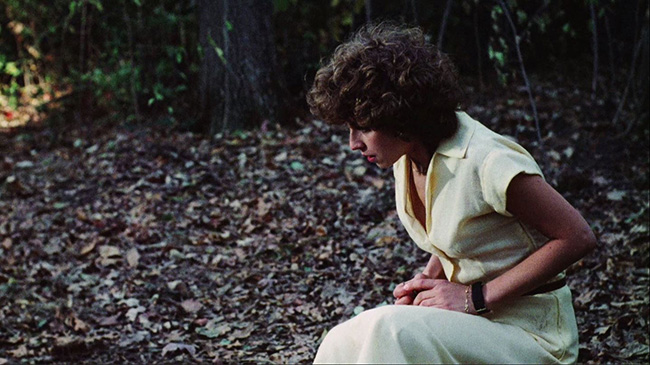
Babysitter Sandy (Jeannie Elias) discovers The Pit.
The shooting title was “Teddy,” and screenwriter Ian A. Stuart intended an exploration of the mind of an 8-9 year old autistic boy named Jamie. The director, Lew Lehman (who wrote John Huston’s Phobia), decided to cast an adolescent actor instead: Sammy Snyders, who was Tom Sawyer in the 1980 TV series Huckleberry Finn and His Friends. The withdrawn Jamie is only able to express his feelings to Teddy, his teddy bear – which is all the stranger with an older actor playing the part. His pretty babysitter Sandy (Jeannie Elias, Nomads) doesn’t believe him when he begins sharing his secrets with her, including not only his talking Teddy but a pit in the woods occupied by “Tra-La-Logs” – cannibalistic Troglodytes, who look like Morlocks. The increasingly frustrated Jamie, shunned by the small town, begins to feed his enemies to the Tra-La-Logs, pushing them into the pit. These include a little old lady in a wheelchair, a football-throwing jock, and a little girl who won’t let Jamie ride her bike. (Why he wants to in the first place is anybody’s guess.) As Stuart explains in an interview on the new Kino disc, Jamie was supposed to be a delusional psychotic, with a denouement revealing that almost everything in the film was the product of his imagination. Whether or not his preferred ending was filmed, it was decided to go straight to credits before the big reveal could happen. The producer’s decision is understandable: as it is, the film ends on a twist, and feels like a natural ending, even though it’s a wild and uproarious one. To have gone a step further would have felt like a cheat. On the other hand, without the explanations, all the illogical events in The Pit remain illogical. Now there is no way to explain why the Troglodytes have been living in a tiny pit undiscovered and thriving for presumably eons. A viewer keeps expecting a connection to be established between the talking Teddy (who, in one scene, moves his head when Jamie is not around, implying he’s actually alive) and the Pit dwellers; no connection comes. The movie is simply one delirious scene after another, constantly topping itself.
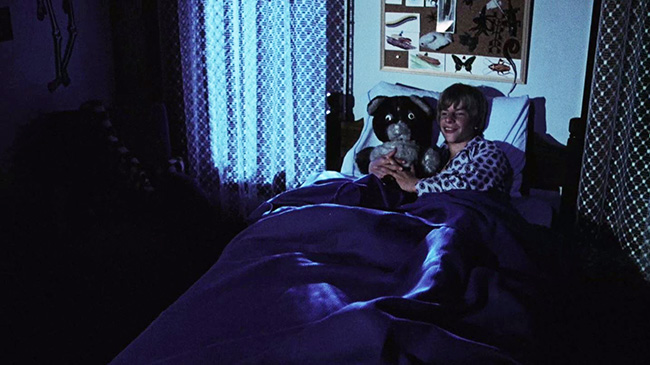
Jamie (Sammy Snyders) and Teddy.
Much of the film’s appeal now is its regional status, not just to Wisconsinites but to horror buffs who like seeking out small productions shot in “fly-over states.” There’s a small-scale monster movie charm at work, particularly when Jamie lets the Trogs out of the pit because he doesn’t have any enemies left to feed to them. The short and shaggy monsters (played by little people, because the children who were hired got sick and threw up in their masks) shuffle through the Wisconsin woods and snatch up a girl skinny dipping in a lake next to a quarry. We can see that her boyfriend is running to her barefoot over the rough-looking rocks, and we hope he didn’t have to do more than one take. We can sense the behind-the-camera negotiation of the brief glimpse of female nudity from the skinny dipper – shot by Stuart, because Lehman’s wife, who joined the location shooting, wouldn’t let him do the nude scenes himself. And, of course, Beaver Dam doesn’t look like a Hollywood backlot. The storefronts are real, the homes are occupied. There are autumn leaves on its sidewalks (the film began shooting on September 4, 1979, and continued for six weeks). Jamie and Sandy walk through Swan City Park with its gorgeous white pavilion, and Jamie scours the Beaver Dam library for books on troglodytes. The filmmakers also picked up shots in nearby Oshkosh and Waupun, and the pit itself was dug outside of Beaver Dam just off the county highway, then filled with cardboard boxes so actors could safely topple inside. Local actors fill out the cast, including a police officer with a Beaver Dam patch on his uniform. Of course, little Sammy Snyder still has a conspicuous Canadian accent. It’s okay that this detail is a little off. Everything is out of whack in The Pit, and it’s all for the better.
